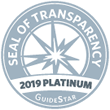
CLINICAL THYROIDOLOGY FOR THE PUBLIC
A publication of the American Thyroid Association
Summaries for the Public from Clinical Thyroidology (from recent articles in Clinical Thyroidology)
Table of Contents | PDF File for Saving and Printing
GOITER
Treatment with modified-release recombinant human TSH prior to radioactive iodine therapy for large goiters does not change the degree of shrinkage of the goiter but does cause more hypothyroidism
ABBREVIATIONS & DEFINITIONS
Goiter: a thyroid gland that is enlarged for any reason is called a goiter. A goiter can be seen when the thyroid is overactive, underactive or functioning normally. If there are nodules in the goiter it is called a nodular goiter; if there is more than one nodule it is called a multinodular goiter.
Thyroid nodule: an abnormal growth of thyroid cells that forms a lump within the thyroid. While most thyroid nodules are non-cancerous (Benign), ~5% are cancerous.
Radioactive iodine (RAI): this plays a valuable role in diagnosing and treating thyroid problems since it is taken up only by the thyroid gland. I-131 is the destructive form used to destroy thyroid tissue in the treatment of thyroid cancer and with an overactive thyroid. I-123 is the non-destructive form that does not damage the thyroid and is used in scans to take pictures of the thyroid (Thyroid Scan) or to take pictures of the whole body to look for thyroid cancer (Whole Body Scan).
Recombinant human TSH (rhTSH): human TSH that is produced in the laboratory and used to produce high levels of TSH in patients after an intramuscular injection. This is mainly used in thyroid cancer patients before treating with radioactive iodine or performing a whole body scan. The brand name for rhTSH is Thyrogen™.
Modified-release recombinant human TSH (MRrhTSH): a lower dose of rhTSH that is released more slowly into the blood stream after injection to provide more sustained levels of TSH.
Hypothyroidism: a condition where the thyroid gland is underactive and doesn’t produce enough thyroid hormone. Treatment requires taking thyroid hormone pills.
Levothyroxine (T4): the major hormone produced by the thyroid gland and available in pill form as Synthroid™, Levoxyl™, Tyrosint™ and generic preparations.
BACKGROUND
When a multinodular goiter is large enough, it can cause compressive symptoms (ie choking and/or difficulty swallowing) or be disfiguring. Even if thyroid biopsies are non-cancerous, therapy to relieve these symptoms must be considered. In most cases, surgical thyroidectomy is the preferred therapy. But in many older patients or in those who want to avoid thyroidectomy and its possible complications, radioactive iodine therapy can be used and has been shown to be efficacious for shrinking the goiter in many studies. Some reports suggest that stimulating the thyroid to take up radioactive iodine with modified-release recombinant human TSH (MRrhTSH) may result in a further decrease in goiter size as compared to treating with radioactive iodine without stimulation. The purpose of the present report was to provide a 3 year follow-up of patients who had been pretreated with MRrhTSH to improve thyroid uptake before administering the radioactive iodine.
THE FULL ARTICLE TITLE:
Fast S et al Long-term efficacy of modified-release recombinant human TSH (MRrhTSH) augmented radioiodine (131I) therapy for benign multinodular goiter: results from a multicenter international, randomized, placebo-controlled dose-selection study. Thyroid. December 16, 2013 [Epub ahead of print].
SUMMARY OF THE STUDY
This study initially included 95 patients with multinodular goiter who were treated with radioactive iodine to reduce the size of the goiter. Patients were 35 to 80 years old with a normal free T4 index and total T3 levels. Patients were randomly assigned to receive either no pre-treatment or a single injeciton of a low dose or high dose MRrhTSH 24 hours before the dose of radioactive iodine. The dose of radioactive iodine was calculated to deliver the same effective dose in all groups. Thyroid volume and cross-sectional area of the windpipe was estimated by CT scans at baseline and at 6 and 36 months after radioactive iodine therapy. Patients also underwent a thyroid-disease–specific questionnaire to evaluate the effect of the treatment on quality of life.
The results from 86 patients were analyzed at 36 months. The average decrease in goijter size 44% in the group without stimulation as compared to 41±21.0 in the low dose MRrhTSH group and 53% in the high dose group. There was no difference in windpipe diameter within the groups. Symptoms improved in all groups. The development of permanent hypothyroidism requiring levothyroxine therapy was 13%, 33%, and 45% in the non-stimulation, low dose and high dose MRrhTSH groups, respectively. More patients in the MRrhTSH groups reported adverse events as well.
WHAT ARE THE IMPLICATIONS OF THIS STUDY?
This important study shows that adding MRrhTSH prior to radioactive iodine for symptomatic multinodular goiter does not affect the decrease in size but does increase the risk of developing hypothyroidism. Thus, MRrhTSH should not be used in this therapy.
—Alan P. Farwell, MD
ATA THYROID BROCHURE LINKS
Goiter: http://www.thyroid.org/what-is-a-goiter
Radioactive Iodine Therapy: http://www.thyroid.org/radioactive-iodine


